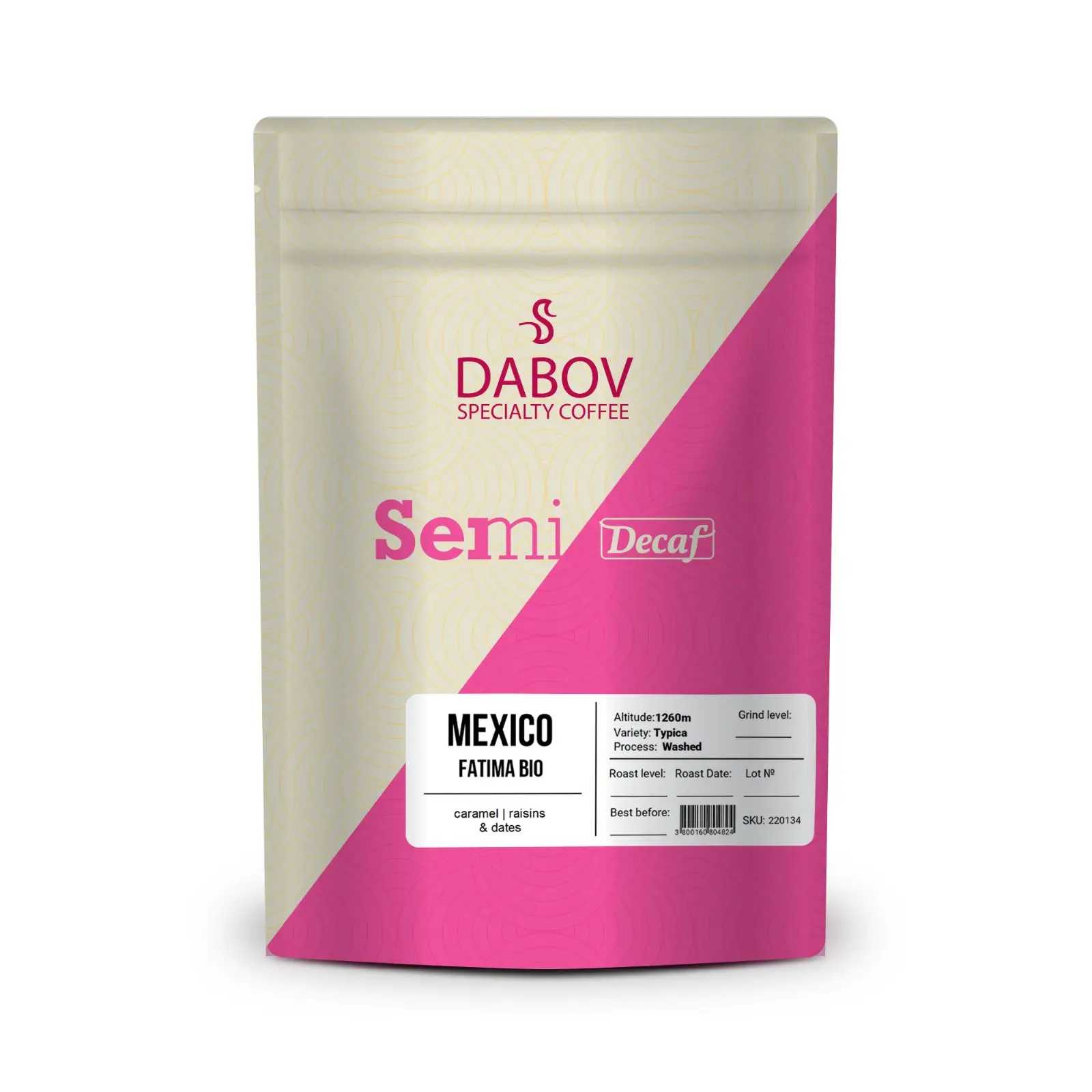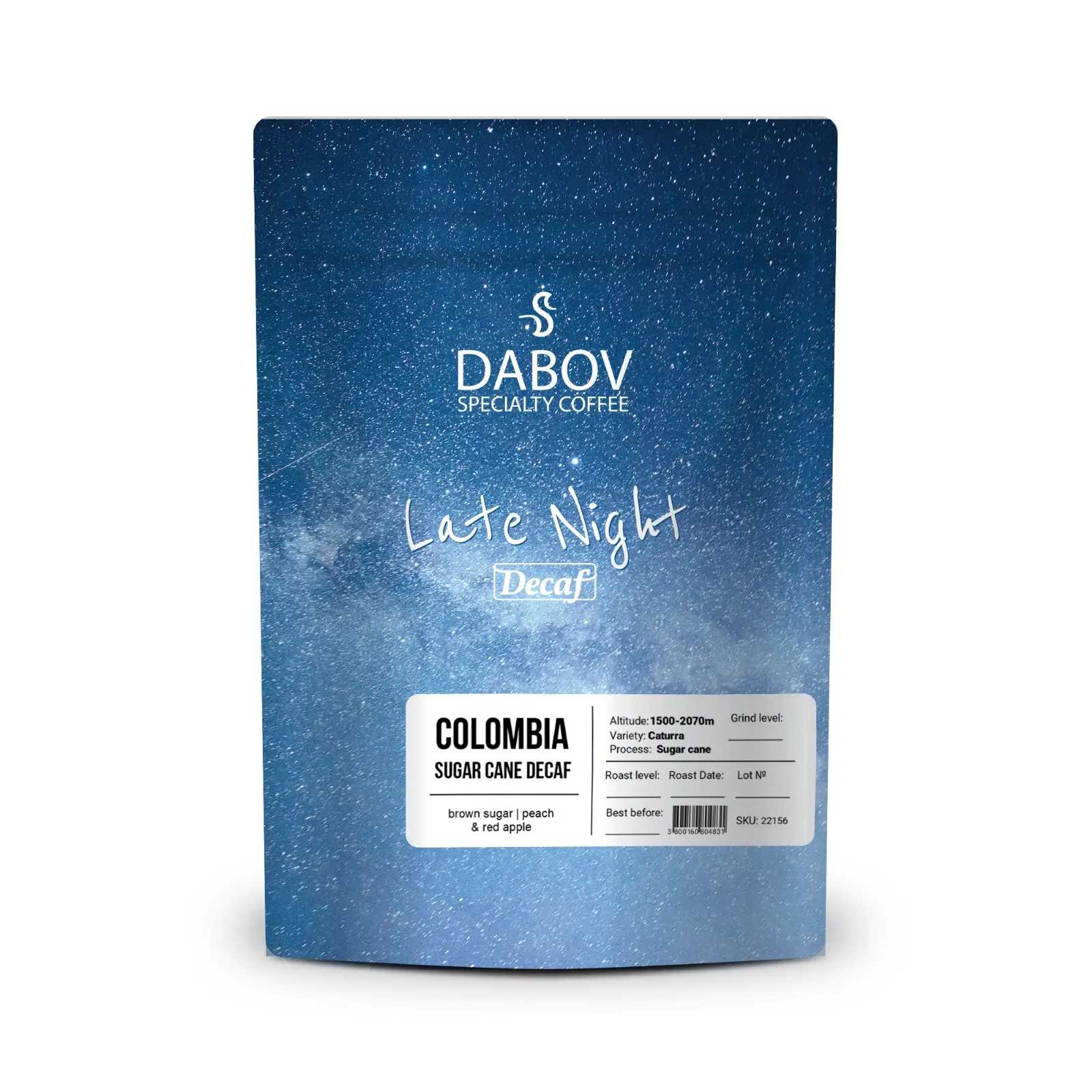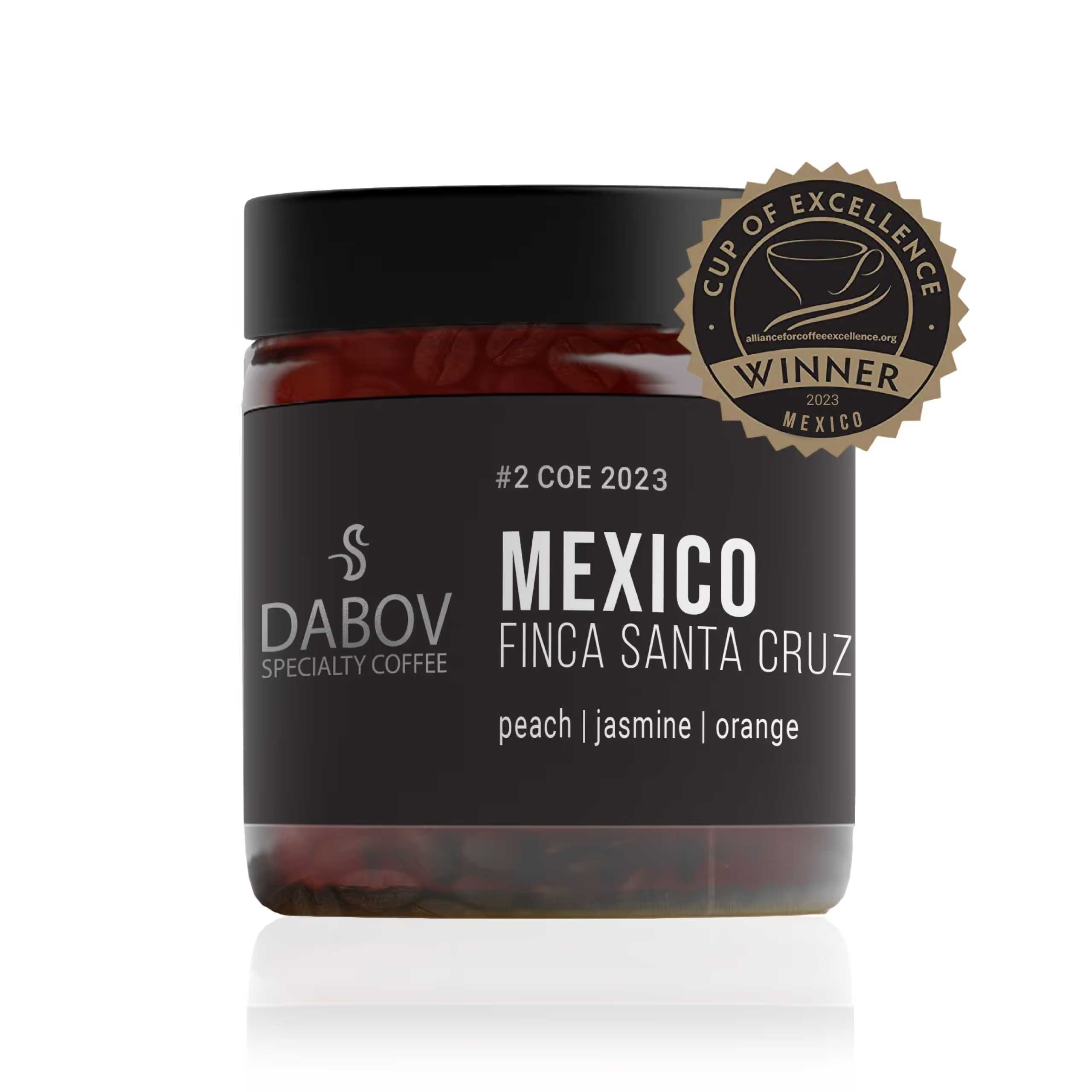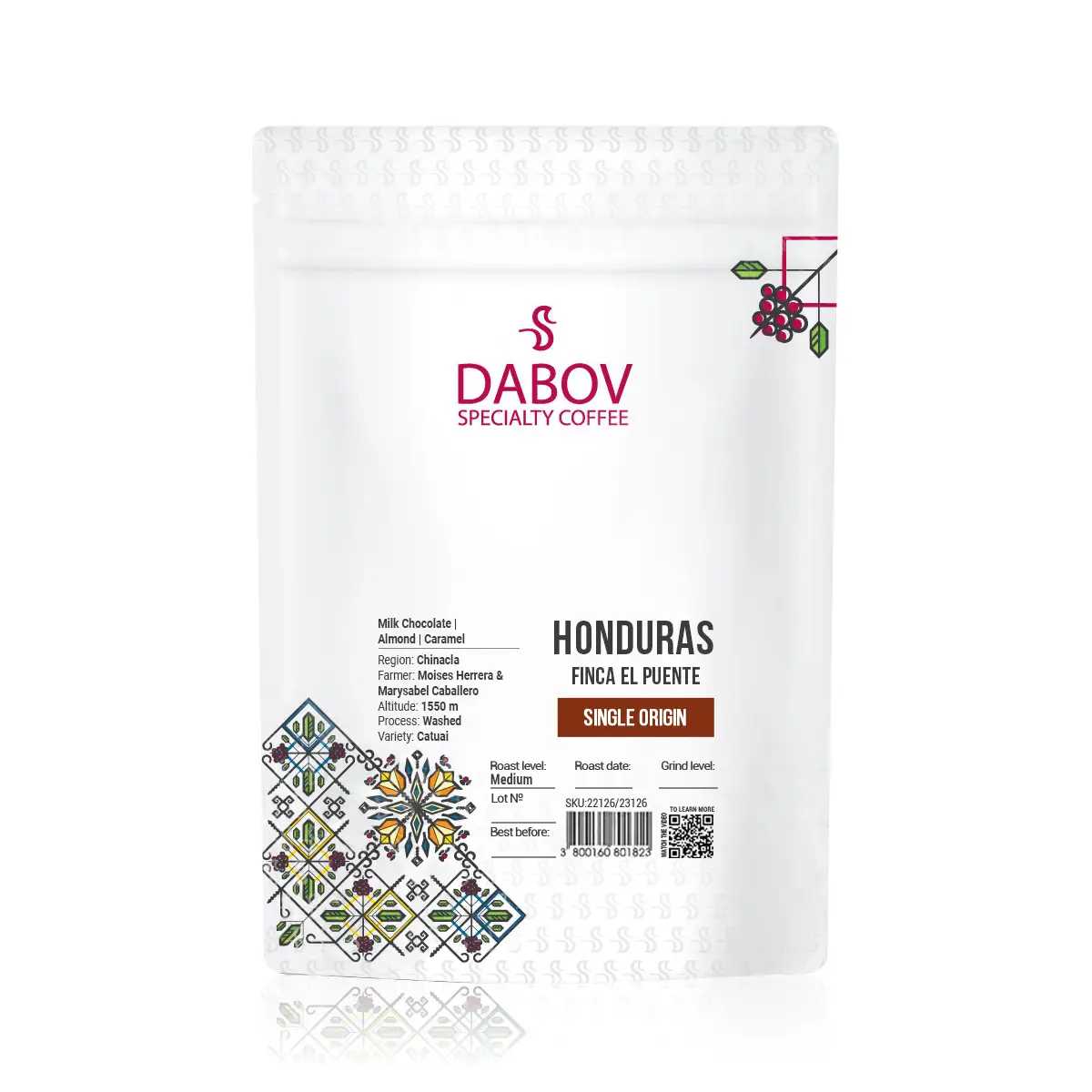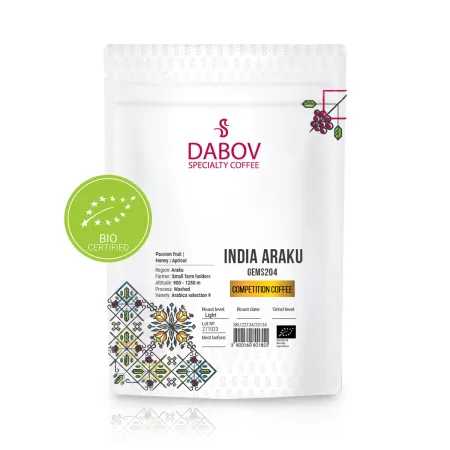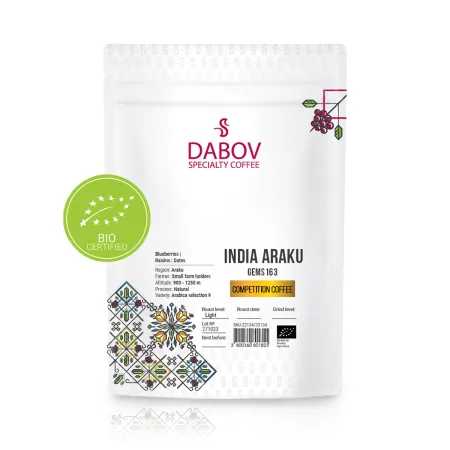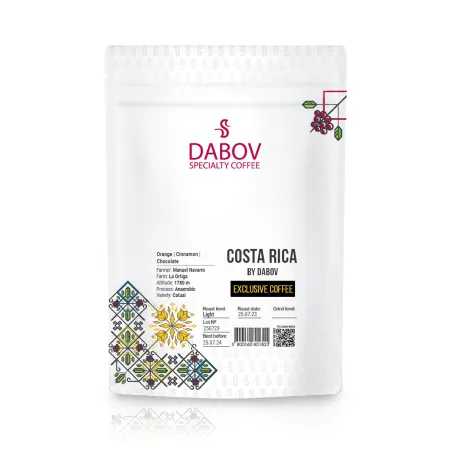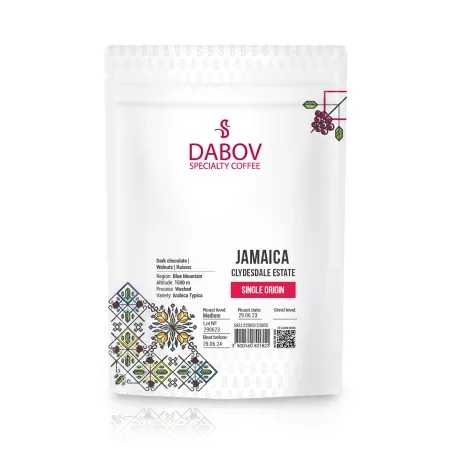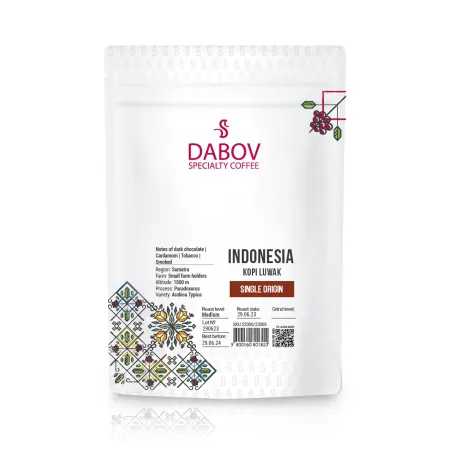Seasonal Coffee and Food Pairings Tastes of the Year
Discover the art of seasonal coffee and food pairings that enhance your tasting experience year-round. This article explores how the changing seasons influence the flavors of coffee and the best foods to pair with them. From light and floral choices in spring to rich and chocolaty options during winter, learn how to create delightful combinations that elevate every meal. We delve into the impact of climate on coffee flavor, provide a comprehensive coffee flavor guide, and share creative pairing ideas for festive occasions and casual gatherings. Join us in celebrating the harmonious blend of coffee and food that complements the seasonal palette.
Coffee, with its rich tapestry of flavors and aromas, has long been a beloved companion to our daily routines and special moments. But have you ever considered how the changing seasons can influence not only the coffee we drink but also the foods we pair it with? Welcome to the fascinating world of seasonal coffee and food pairings, where we'll explore how to elevate your coffee experience throughout the year by harmonizing it with the perfect culinary companions.
As we embark on this flavorful journey, we'll delve into the intricate relationship between coffee harvests, seasonal flavors, and the foods that complement them best. Our goal is to help you discover delightful combinations that will not only tantalize your taste buds but also deepen your appreciation for the nuanced world of coffee. Whether you're a seasoned coffee connoisseur or simply someone who enjoys a good cup of joe, this guide will introduce you to new ways of experiencing coffee that align with nature's rhythms and the changing tastes of each season.
I. Understanding Coffee Tasting Seasons
A. Overview of Coffee Tasting Seasons
Coffee tasting seasons are a concept that might seem unfamiliar to many, but they're crucial to understanding the ever-changing landscape of coffee flavors throughout the year. These seasons are intrinsically linked to the harvesting cycles of coffee-growing regions around the world. Unlike wine, which has a single annual harvest, coffee is harvested at different times in various parts of the globe, leading to a constant influx of fresh beans with distinct flavor profiles.
The concept of coffee tasting seasons doesn't necessarily align with our traditional four seasons. Instead, it refers to the periods when coffees from specific origins are at their peak freshness and flavor. For instance, coffees from Central America might be at their best from March to June, while Ethiopian coffees could shine from November to February. This cyclical nature of coffee harvests means that attentive roasters and cafes can offer a rotating selection of coffees that showcase the best of what's currently available.
Understanding these seasons allows coffee enthusiasts to anticipate and appreciate the subtle changes in flavor profiles throughout the year. It's a way to connect with the agricultural roots of coffee and to experience the product as nature intended – fresh, vibrant, and full of character. By aligning our coffee choices with these natural cycles, we open ourselves up to a more diverse and exciting coffee experience.
B. Influence of Weather on Coffee Flavor
The weather plays a pivotal role in shaping the flavor profile of coffee, and this influence extends from the growing conditions right through to how we perceive the taste in our cups. During the growing season, factors such as temperature, rainfall, and sunlight exposure all contribute to the development of flavor compounds within the coffee cherry.
In warmer climates, coffee tends to ripen faster, which can result in sweeter, fruitier notes. Conversely, cooler temperatures and higher altitudes often lead to slower maturation, allowing for more complex acid structures to develop, resulting in brighter, more vibrant flavors. Rainfall patterns affect the water content of the cherry, which in turn impacts the concentration of flavors.
But the weather's influence doesn't stop at harvest. Even as we consume coffee, ambient temperature can affect our perception of its taste. On a hot summer day, we might be more attuned to the refreshing, acidic notes in a light roast. In contrast, the colder months might have us craving the comforting, full-bodied warmth of a darker roast.
As consumers, we can expect certain flavor notes to be more prominent during different times of the year. Spring might bring coffees with delicate floral notes and crisp acidity. Summer could showcase bright, fruity flavors with a refreshing finish. Fall often ushers in coffees with nutty, caramel-like sweetness. Winter might feature rich, full-bodied coffees with notes of chocolate and spice.
By understanding these seasonal variations, coffee lovers can align their preferences with the natural ebb and flow of coffee flavors, leading to a more dynamic and engaging coffee experience throughout the year.
II. Seasonal Coffee Pairings
A. Spring Coffee Pairings
1. Flavor Profiles
As nature awakens from its winter slumber, spring coffees emerge with light and floral profiles that mirror the season's rejuvenating spirit. These coffees often feature delicate, nuanced flavors that dance on the palate. Expect notes of jasmine, honeysuckle, and even subtle hints of citrus blossom. The acidity in spring coffees tends to be bright and lively, reminiscent of the season's fresh energy.
Many spring coffees come from regions with early harvests, such as some parts of East Africa and Central America. Ethiopian Yirgacheffe, known for its distinctive floral notes, is a prime example of a coffee that shines in spring. These coffees often undergo light to medium roasts to preserve their delicate flavor compounds, resulting in a cup that's both complex and refreshing.
2. Food Pairing Ideas
To complement the light and floral notes of spring coffees, consider pairing them with foods that enhance rather than overpower these subtle flavors. Fresh fruit tarts make an excellent companion, as their natural sweetness and slight tartness can accentuate the coffee's floral notes. A lemon tart, for instance, can bring out citrusy undertones in the coffee while providing a pleasant contrast to its more delicate flavors.
Herb-infused salads are another fantastic pairing option. A mixed green salad with a light vinaigrette and herbs like basil or mint can create a refreshing harmony with the coffee's bright acidity. The herbal notes in the salad can also draw out similar subtle flavors in the coffee that might otherwise go unnoticed.
For a breakfast pairing, consider light and airy pastries like croissants or Danish pastries. Their buttery, flaky texture complements the coffee's lightness while allowing its nuanced flavors to shine through. A honey-lavender scone could be an adventurous choice, playing off the floral notes in both the coffee and the pastry.
Lastly, don't overlook the potential of cheese pairings. Soft, mild cheeses like fresh mozzarella or ricotta can provide a creamy backdrop that allows the coffee's delicate flavors to take center stage. A light drizzle of honey over these cheeses can further enhance the experience, bridging the gap between the coffee's natural sweetness and the cheese's subtle flavors.
B. Summer Coffee Pairings
1. Flavor Profiles
Summer brings with it a bounty of bright and fruity coffees that capture the essence of the season. These coffees are characterized by their vibrant acidity and refreshing qualities, making them perfect for hot summer days. Expect flavor notes reminiscent of tropical fruits like pineapple, mango, and papaya, as well as berry-like flavors such as strawberry and blueberry.
Coffees from regions like Kenya, known for their bold, fruity profiles, often shine during this season. You might also encounter Central American coffees with pronounced citrus notes. These summer coffees typically undergo a light to medium roast to preserve their lively acidity and fruit-forward flavors. The result is a cup that's bright, energizing, and complex – a perfect reflection of summer's vivacity.
2. Food Pairing Ideas
To complement the bright and fruity notes of summer coffees, consider pairing them with foods that either match or provide a pleasant contrast to their lively profiles. Grilled vegetables make an excellent pairing, as the slight char from grilling can offer a savory counterpoint to the coffee's fruitiness. A grilled vegetable salad with a light vinaigrette can create a refreshing and balanced combination.
Light seafood dishes also pair wonderfully with summer coffees. A citrus-marinated ceviche, for instance, can echo the bright, acidic notes in the coffee while providing a cool, refreshing contrast. Grilled fish with a mango salsa is another option that can complement the tropical fruit notes often found in summer coffees.
For a sweet pairing, consider fruit-based desserts that mirror the coffee's flavor profile. A mixed berry tart or a peach cobbler can enhance the fruity notes in the coffee while adding a delightful sweetness. Alternatively, a lemon sorbet can provide a palate-cleansing contrast that highlights the coffee's complexity.
Don't forget about breakfast pairings. A yogurt parfait with fresh summer berries and a drizzle of honey can create a harmonious balance with the coffee's acidity and fruitiness. For something more substantial, try an avocado toast topped with cherry tomatoes and a squeeze of lemon – the creamy avocado can soften the coffee's acidity while the tomatoes and lemon enhance its bright notes.
Lastly, for those who enjoy cheese with their coffee, consider fresh, tangy cheeses like feta or goat cheese. These can provide a creamy contrast to the coffee's acidity while their tanginess complements its fruity notes. A summer salad featuring these cheeses, along with fresh fruits like strawberries or peaches, can create a delightful synergy with your summer coffee selection.
C. Fall Coffee Pairings
1. Flavor Profiles
As the leaves begin to change and there's a crisp chill in the air, fall ushers in a new palette of coffee flavors that perfectly capture the essence of the season. Fall coffees are characterized by their rich, warm profiles with pronounced nutty and spiced notes. These coffees often feature a more full-bodied experience compared to their summer counterparts, with flavors reminiscent of toasted almonds, hazelnuts, cinnamon, and even subtle hints of clove or nutmeg.
Many fall coffees come from regions with later harvests, such as parts of South America and Indonesia. Brazilian coffees, known for their nutty, chocolatey profiles, often shine during this season. These coffees typically undergo medium to dark roasts, which develop their rich, caramelized flavors and create a cup that's both comforting and complex – perfect for the cooler autumn weather.
2. Food Pairing Ideas
To complement the rich, warm flavors of fall coffees, consider pairings that enhance their nutty and spiced notes while providing a cozy, comforting experience. Pumpkin spiced treats are a classic fall pairing that can beautifully complement the warm spice notes in the coffee. A slice of homemade pumpkin bread or a pumpkin spice muffin can create a harmonious flavor profile that celebrates the essence of autumn.
Hearty soups make excellent companions to fall coffees. A butternut squash soup, for instance, can mirror the coffee's warm, slightly sweet notes while providing a savory contrast. The creamy texture of the soup can also balance the coffee's potential bitterness, resulting in a well-rounded tasting experience.
Roasted nuts are another fantastic pairing option. A mix of roasted almonds, hazelnuts, and pecans can enhance the nutty notes in the coffee while adding a pleasant crunch. For an indulgent twist, try chocolate-covered nuts, which can bring out any cocoa undertones in the coffee.
For a breakfast pairing, consider warm oatmeal topped with cinnamon, brown sugar, and chopped nuts. The oatmeal's hearty texture and warm spices complement the coffee's rich profile, creating a comforting start to a cool autumn day. Alternatively, a slice of cinnamon-raisin toast with a spread of almond butter can echo the coffee's nutty and spiced notes.
When it comes to desserts, apple-based treats are a natural choice. An apple crisp or tarte tatin can provide a delightful contrast of sweet and tart flavors that complement the coffee's richness. The caramelized notes in these desserts can also enhance similar flavors in the coffee.
Lastly, for cheese enthusiasts, consider aged cheeses like sharp cheddar or gouda. These cheeses have nutty, complex flavors that can stand up to the richness of fall coffees. Pair them with sliced apples or pears for a simple yet sophisticated tasting experience that captures the essence of autumn.
D. Winter Coffee Pairings
1. Flavor Profiles
As winter settles in with its frosty temperatures and cozy nights, coffee flavors shift to match the season's desire for warmth and comfort. Winter coffees are typically characterized by their dark, robust profiles with pronounced chocolaty and smoky notes. These coffees often feature a full body and low acidity, creating a rich, smooth cup that's perfect for sipping slowly on cold days.
Many winter coffees come from regions known for their bold, intense flavors, such as Sumatra or Guatemala. These coffees often undergo darker roasts, which develop deep, caramelized flavors and bring out notes of dark chocolate, molasses, and even hints of tobacco or leather. The result is a cup that's both complex and comforting – a perfect antidote to winter's chill.
2. Food Pairing Ideas
To complement the bold, rich flavors of winter coffees, consider pairings that can stand up to their intensity while enhancing their comforting qualities. Rich desserts make excellent companions to these robust coffees. A slice of dark chocolate cake or a serving of tiramisu can mirror the coffee's chocolaty notes while providing a delightful sweetness that balances any potential bitterness.
Hearty comfort foods are natural partners for winter coffees. A bowl of chili, for instance, can complement the coffee's smoky notes while its spices create an interesting flavor interplay. The richness of the chili also matches the full body of the coffee, resulting in a satisfying, warming combination.
Spiced cakes and breads are another fantastic pairing option. A slice of gingerbread or a piece of cinnamon coffee cake can enhance the subtle spice notes in the coffee while adding a pleasant sweetness. The warm spices in these treats echo the comforting nature of winter coffees.
For a breakfast pairing, consider a hearty dish like a full English breakfast or a stack of buckwheat pancakes with maple syrup. The savory elements in these dishes can provide an interesting contrast to the coffee's richness, while sweet components like maple syrup can bring out any caramel or molasses notes in the coffee.
When it comes to cheese pairings, opt for bold, flavorful options. A strong blue cheese or an aged Gouda can stand up to the intensity of winter coffees while adding their own complex flavors to the mix. Pair these with dried fruits or nuts for a well-rounded tasting experience.
Lastly, don't overlook the potential of savory pastries as pairings. A meat pie or a cheese Danish can provide a rich, satisfying complement to the coffee. The buttery, flaky texture of the pastry can soften any harsh notes in the coffee, while the savory filling creates an interesting flavor contrast.
III. Coffee Flavor Guide
A. Exploring Different Coffee Varieties
Understanding the nuances of different coffee varieties is crucial for appreciating the diverse world of coffee flavors and making informed pairing decisions. The two main species of coffee beans are Arabica and Robusta, each with its own distinct characteristics that contribute to the overall flavor profile of the coffee.
Arabica beans, which account for about 60-70% of global coffee production, are generally considered to produce superior coffee. They're known for their sweeter, softer taste with tones of sugar, fruit, and berries. The acidity is higher, with that winey taste that characterizes coffee with excellent acidity. Arabica beans are typically more complex in flavor, with notes that can range from chocolate and nuts to fruits and florals depending on their origin and processing method.
Robusta beans, on the other hand, have a stronger, harsher taste with a grainy overtone and peanutty aftertaste. They contain twice as much caffeine as Arabica beans and are often used in espresso blends to add depth and crema. While generally considered less refined than Arabica, high-quality Robusta can contribute interesting earthy, woody notes to a blend.
The region where coffee is grown also plays a significant role in determining its flavor profile. Here's a brief overview of how different regions contribute unique tastes relevant to each season:
- Central American coffees (e.g., Guatemala, Costa Rica) often feature bright acidity with citrus and chocolate notes, making them excellent choices for spring and summer.
- South American coffees (e.g., Brazil, Colombia) tend to have nutty, chocolatey profiles with medium body, perfect for fall and winter.
- African coffees (e.g., Ethiopia, Kenya) are known for their fruity, floral notes and bright acidity, shining in spring and summer pairings.
- Indonesian coffees (e.g., Sumatra, Java) often have earthy, spicy notes with full body, ideal for fall and winter pairings.
- Caribbean coffees (e.g., Jamaica Blue Mountain) typically offer a mild flavor with slight sweetness, versatile enough for year-round enjoyment.
Understanding these regional differences can help coffee enthusiasts anticipate and appreciate the seasonal variations in their coffee experiences.
B. Flavor Notes Explained
To fully appreciate the nuances of coffee and make informed pairing decisions, it's essential to understand the key components that contribute to its flavor profile. Here's a breakdown of the main elements:
- Acidity: Often misunderstood, acidity in coffee refers to a bright, tangy quality that adds liveliness to the cup. It's experienced as a sharp, pleasing sensation on the sides of the tongue. High acidity is often described as "bright" or "crisp," while low acidity might be termed "smooth" or "round."
- Body: This refers to the weight or thickness of the coffee in your mouth. It's often described in terms like "light," "medium," or "full." A light-bodied coffee feels thin and watery, while a full-bodied coffee feels heavier and more substantial.
- Sweetness: Natural sweetness in coffee can range from subtle to pronounced. It might be perceived as fruity (like berries or citrus), caramel-like, or reminiscent of brown sugar or honey.
- Bitterness: While often seen as negative, a certain degree of bitterness is an essential part of coffee's complex flavor profile. The key is balance – too much bitterness can overpower other flavors.
- Flavor Notes: These are the specific taste characteristics that make each coffee unique. They can range from fruity (berries, citrus, stone fruits) to nutty, chocolatey, floral, or even spicy.
- Aroma: The smell of coffee contributes significantly to its perceived flavor. Aromas can be described as fruity, floral, nutty, earthy, or spicy, among others.
Understanding these elements can help you identify and appreciate the unique characteristics of different coffees. Here's a simple chart of common flavor notes associated with each season:
Spring:
- Floral (jasmine, honeysuckle)
- Light fruits (lemon, green apple)
- Honey
Summer:
- Bright fruits (berries, tropical fruits)
- Citrus (orange, grapefruit)
- Tea-like
Fall:
- Nuts (almond, hazelnut)
- Warm spices (cinnamon, nutmeg)
- Caramel
Winter:
- Chocolate (dark, milk)
- Rich fruits (fig, plum)
- Molasses
By familiarizing yourself with these flavor components and seasonal trends, you'll be better equipped to explore the world of coffee and discover pairings that enhance your enjoyment of both coffee and food.
IV. Creative Coffee and Food Pairing Ideas
A. Pairings for Specific Occasions
1. Seasonal Festivities
Holiday seasons offer unique opportunities to explore creative coffee and food pairings that capture the spirit of the occasion. Here are some ideas for popular holidays:
Christmas:
- Pair a full-bodied, spice-forward coffee with gingerbread cookies or fruit cake. The warm spices in both the coffee and the treats create a harmonious flavor profile that embodies the essence of the holiday season.
- For a Christmas morning treat, try a medium-roast coffee with notes of chocolate and orange alongside a slice of panettone. The fruity sweetness of the bread complements the citrusy notes in the coffee.
Thanksgiving:
- Opt for a medium-roast coffee with nutty and caramel notes to accompany pumpkin pie. The coffee's warmth and sweetness enhance the pie's spices without overpowering them.
- For after-dinner sipping, choose a dark roast with hints of molasses to pair with pecan pie. The robust flavors of the coffee stand up well to the richness of the pie.
Easter:
- A light, floral coffee pairs beautifully with hot cross buns. The subtle sweetness of the buns complements the delicate notes in the coffee.
- For a chocolate-centric pairing, try a medium-roast coffee with cocoa notes alongside chocolate Easter eggs. The coffee enhances the chocolate flavor without overwhelming it.
Halloween:
- Embrace the season with a pumpkin spice latte paired with caramel apples. The sweet and spicy flavors create a festive combination that captures the essence of fall.
- For a more adult treat, pair a dark, smoky coffee with dark chocolate-covered almonds. The combination of bitter and sweet flavors mirrors the trick-or-treat spirit of the holiday.
2. Casual Gatherings
For friendly gatherings or brunches, consider these pairing ideas that make use of seasonal ingredients:
Spring Brunch:
- Serve a light, citrusy coffee alongside a spinach and goat cheese quiche. The brightness of the coffee cuts through the richness of the quiche, creating a balanced meal.
- Pair a floral Ethiopian coffee with lemon-blueberry scones. The fruity notes in both the coffee and the scones create a harmonious flavor profile.
Summer Picnic:
- Offer cold brew coffee with notes of chocolate and cherry, served alongside a fresh fruit salad. The coffee's smoothness complements the juicy fruits perfectly.
- Pair a bright, acidic coffee with caprese sandwiches. The coffee's liveliness balances the creamy mozzarella and enhances the tomato's acidity.
Fall Potluck:
- Serve a medium-roast coffee with notes of nuts and caramel alongside a warm apple crisp. The coffee's sweetness echoes the dessert's flavors, creating a comforting combination.
- Pair a full-bodied coffee with roasted vegetable tarts. The coffee's richness complements the savory, caramelized flavors of the vegetables.
Winter Game Night:
- Offer a dark, chocolatey coffee with a charcuterie board featuring aged cheeses and cured meats. The coffee's boldness stands up well to the strong flavors on the board.
- Pair a spice-forward coffee with homemade cinnamon rolls. The warm spices in both create a cozy, indulgent treat perfect for cold nights.
These creative pairings can elevate your gatherings, turning them into memorable experiences that celebrate the flavors of each season.
B. DIY Coffee and Food Pairing Events
Hosting your own coffee and food pairing event can be a fun and educational experience for you and your guests. Here are some tips to help you create an enjoyable atmosphere and offer exciting pairing ideas to participants:
- Set the Stage: Create a welcoming environment with comfortable seating, good lighting, and perhaps some soft background music. Provide each guest with a tasting mat, water for palate cleansing, and note-taking materials.
- Choose Your Coffees: Select 3-5 different coffees that showcase a range of flavor profiles. Consider including both single-origin coffees and blends to highlight the diversity of coffee flavors.
- Prepare the Food: Offer a variety of small bites that complement or contrast with the coffees. Include a mix of sweet and savory options, and consider the season when making your selections.
- Educate Your Guests: Before starting the tasting, give a brief introduction to coffee tasting techniques. Explain how to smell the coffee, taste it, and identify different flavor notes.
- Guide the Tasting: Lead your guests through each coffee and food pairing, encouraging them to share their observations and experiences.
- Encourage Experimentation: After the guided portion, allow guests to mix and match coffees and foods on their own. This can lead to surprising and delightful discoveries.
- Provide Information: Offer cards with information about each coffee's origin, processing method, and flavor profile. This adds an educational element to the event.
Here are some pairing ideas to get you started:
- Light, floral coffee + lemon shortbread cookies
- Bright, fruity coffee + dark chocolate truffles
- Nutty, medium-roast coffee + almond croissants
- Rich, dark-roast coffee + blue cheese and honey on crackers
- Spice-forward coffee + ginger snaps
Remember, the goal is to create an engaging, interactive experience that deepens your guests' appreciation for coffee and food pairings. Encourage open discussion and remind everyone that taste is subjective – there are no wrong answers in a tasting event!
V. Practical Tips for Perfect Pairings
A. Brewing Methods and Their Impact
The brewing method you choose can significantly impact the flavor profile of your coffee, which in turn affects its pairing potential. Here's an overview of common brewing methods and their effects on coffee flavor:
- Espresso: This method produces a concentrated shot of coffee with a layer of crema on top. It emphasizes the coffee's body and intensity, bringing out rich, bold flavors. Espresso pairs well with sweet pastries that can balance its strength, or with dark chocolate for a luxurious combination.
- French Press: This immersion method results in a full-bodied coffee with a rich mouthfeel. It tends to highlight the coffee's natural oils and can bring out earthy, chocolatey notes. French press coffee pairs beautifully with hearty breakfast foods or rich, creamy desserts.
- Pour-Over: This method allows for precise control over the brewing process, often resulting in a clean, bright cup that highlights the coffee's subtle flavors and aromas. Pour-over coffee is excellent for showcasing the nuanced notes in light to medium roasts and pairs well with fruit-based desserts or light, flaky pastries.
- Cold Brew: Steeping coffee grounds in cold water for an extended period produces a smooth, less acidic coffee with a slightly sweet taste. Cold brew pairs wonderfully with chocolate desserts, creamy cheeses, or even savory brunch items like avocado toast.
- AeroPress: This method can produce a cup similar to espresso but with a cleaner taste and less bitterness. It's versatile and can highlight both the brightness of light roasts and the richness of dark roasts. AeroPress coffee pairs well with a wide range of foods, from fresh fruit to nutty cookies.
When considering pairings, think about how the brewing method affects the coffee's acidity, body, and flavor notes. For example, a bright, acidic pour-over might pair better with a lemon tart than a rich, full-bodied French press coffee would.
B. Concluding Suggestions for Exploration
As we conclude our journey through the world of seasonal coffee and food pairings, remember that the art of pairing is as much about personal exploration as it is about following guidelines. Here are some final suggestions to help you continue your coffee pairing adventure:
- Trust Your Palate: While expert recommendations can be helpful, your personal taste preferences should always guide your pairings. If you enjoy a combination, it's a good pairing for you.
- Experiment Boldly: Don't be afraid to try unexpected combinations. Sometimes, the most surprising pairings can be the most delightful.
- Consider Contrast: While complementary flavors often work well, don't overlook the potential of contrasting flavors. A bright, acidic coffee might pair beautifully with a rich, creamy dessert.
- Embrace Seasonality: Let the changing seasons guide your coffee and food choices. This not only ensures freshness but also aligns your palate with nature's rhythms.
- Host Tasting Parties: Invite friends to join in your exploration. Tasting and discussing different pairings in a group can lead to new insights and shared enjoyment.
- Keep a Tasting Journal: Record your favorite pairings and tasting notes. This can help you refine your palate and remember successful combinations.
- Explore Local Offerings: Visit local roasteries and cafes to discover unique coffees and pairing suggestions from experts in your area.
- Share Your Discoveries: Don't keep your favorite pairings to yourself! Share them on social media or in the comments section below. Your experiences could inspire others in their coffee journey.
Remember, the world of coffee and food pairings is vast and ever-evolving. Each cup of coffee and each bite of food is an opportunity to discover something new. So keep exploring, keep tasting, and most importantly, keep enjoying the rich, diverse world of coffee and its perfect culinary companions.
Conclusion
As we've journeyed through the seasons, exploring the intricate dance between coffee flavors and their ideal food pairings, we've uncovered a world of sensory delights that change with the turning of the calendar. From the light, floral notes of spring coffees paired with fresh fruit tarts, to the rich, bold flavors of winter brews complementing hearty comfort foods, we've seen how seasonal coffee and food pairings can elevate our daily rituals and special occasions alike.
Understanding the nuances of coffee tasting seasons, the influence of weather on flavor profiles, and the impact of different brewing methods has equipped us with the knowledge to make informed and exciting pairing choices. We've learned that the art of pairing is not just about following rules, but about exploring, experimenting, and trusting our own palates.
The beauty of seasonal coffee and food pairings lies not just in the flavors themselves, but in how they connect us to the rhythms of nature and the agricultural roots of coffee. By aligning our coffee choices with the seasons, we open ourselves up to a more diverse and engaging coffee experience throughout the year. We become more attuned to the subtle changes in flavor profiles, appreciating the unique characteristics that each season brings to our cups.
Moreover, pairing coffee with food seasonally enhances our appreciation for both. It encourages us to be more mindful of what we're consuming, to savor each sip and bite, and to discover new flavor combinations we might never have considered. It turns our daily coffee routine into an adventure, and our special occasions into memorable sensory experiences.
As you continue your journey through the world of seasonal coffee and food pairings, remember that every cup of coffee holds the potential for discovery. Whether you're sipping a bright, citrusy brew on a summer morning or cradling a rich, chocolatey mug on a cold winter's night, take a moment to consider what foods might complement or contrast with those flavors. Let the seasons guide you, but don't be afraid to experiment and create your own perfect pairings.
In the end, the goal is not just to find the "right" combinations, but to deepen your enjoyment and appreciation of both coffee and food. So here's to the changing seasons, to the farmers who nurture our beloved coffee beans, to the roasters who bring out their best qualities, and to you, the coffee lover, ready to explore the tastes of the year. May your cup always be full of discovery, and your plate always offer the perfect companion to your brew. Cheers to the delicious journey ahead!



